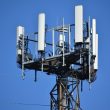In 2019, the world saw the first large-scale rollouts of 5G in countries such as the United States and South Korea. That same year, research institutions and companies started looking at the next big thing: 6G.
Six years later, have any of the initial predictions stood? According to Jessy Cavazos, Director of 6G Solutions at Keysight, some have changed direction, while technologies like AI bring in a whole set of opportunities for telecoms.
Jessy Cavazos leads Keysight’s 6G solutions efforts. She joined in January 2019 with a focus on 5G. Prior to that, Cavazos was the Industry Director for the Test & Measurement practice at Frost & Sullivan tracking that industry for more than 15 years.
Cavazos has authored numerous market studies highlighting key opportunities and disruptive trends and has been published in industry-leading publications. She holds a bachelor’s degree in international business from the Institut de Formation Internationale located in Rouen, France, now part of the NEOMA Business Schools.
In this interview with TelcoForge, Cavazos shared her views on the current state of research, what has been learned in the span, and what’s ahead for her and Keysight in the 6G realm.
TelcoForge: Around five years ago, there was an understanding that we would need to move to higher frequencies to enable 6G. However, we’re now talking about centimetre waves. What changed since then? Being at the forefront of these discussions as Keysight, what do you make of this shift in direction?
Jessy Cavazos: Over the past several years, the industry has faced both technical and economic challenges in deploying 5G at millimetre-wave (mmWave) frequencies. These challenges have tempered initial enthusiasm in the industry to leverage frequencies in sub-terahertz (THz) and THz spectrum for 6G, despite their potential for wider bandwidth, high data rates, and low latency.
At these higher frequencies, propagation loss increases significantly. Signals are easily obstructed by environmental factors like walls, trees, and weather conditions. Additionally, deploying infrastructure to support these frequencies requires substantial investments, while many operators are still working on monetising their 5G deployments.
As a result, the industry’s focus has shifted toward less challenging frequency bands. There is now strong focus on the upper midband, also referred to as centimetre-wave (cmWave) or frequency range 3 (FR3). While cmWave frequencies still face higher propagation loss than lower bands, the challenges are more manageable compared to sub-THz.
That said, research into higher frequencies continues in academic and research institutions. At Keysight, we believe that 6G will adopt a multi-band approach as each band has benefits and drawbacks and use cases have different requirements. The key will be to use them intelligently to cater to different use case requirements and provide the best all-around user experience.
By leveraging different frequency bands, from sub-7 GHz to sub-THz and others in between, 6G can meet the diverse and growing demands of future wireless communications.
Another change is the rise of AI overall. What is Keysight’s approach to AI in test and measurement, and how do you see this technology impacting the development of future networks, such as 6G?
AI and ML are poised to play a transformative role in 6G, both within the network itself and across the design and test lifecycle. We see AI not just as a tool, but as a foundational enabler of next-generation wireless systems.
AI capabilities are already being progressively integrated into the standards towards 6G to enhance network performance.
As the industry moves through 3GPP releases, we anticipate evolving from AI-powered network components to an AI-coordinated approach between devices and the network, ultimately leading to AI-native elements. This evolution will allow networks to become more intelligent, adaptive, and efficient.
We expect AI to permeate through all the layers of the 6G network allowing for higher levels of optimization. Radios will learn and adapt to their environment, and the network architecture will incorporate AI at all levels to boost performance.
In particular, AI-RAN – the application of AI in the radio access network (RAN) – is gaining momentum to optimise network resources, improve radio signal processing, and enhance overall network efficiency. Keysight is actively contributing to this evolution through its participation in the AI-RAN Alliance, where we collaborate with industry and academic leaders to accelerate the integration of AI across RAN components.
From a design and test perspective, AI / ML is equally critical. Integrating AI into wireless networks drives an exponential increase in network complexity. AI models need to be rigorously tested, validated and optimised across thousands of site-specific scenarios before being implemented into live networks.
That is why Keysight is investing heavily in digital twin technology. We believe network digital twins will be essential for 6G, enabling the creation of highly realistic simulations to validate AI models for deployment.
Speaking of technologies, we’re seeing the development of tools that could be fundamental for 6G. From a spectrum perspective, RIS seems to be promising. How do you see RIS evolving? What other technologies do you think could be part of 6G networks?
Reconfigurable intelligent surfaces (RIS) will have a place in the 6G standard for enhancing network coverage. By controlling how radio waves are reflected or refracted, RIS can improve connectivity in areas traditionally difficult to cover.
Non-terrestrial networks (NTN) will be a key enabler for 6G network coverage. By integrating satellite and airborne platforms with terrestrial infrastructure, NTN can deliver connectivity with high data rates over vast regions and areas lacking terrestrial infrastructure. These networks can be connected seamlessly together and/or to terrestrial networks to provide continuous and ubiquitous wireless coverage. NTN will be essential for achieving ubiquitous coverage in 6G.
Beyond RIS and NTN, several other technologies are emerging as drivers for 6G, including FR3, AI / ML, and integrated sensing and communication (ISAC). Together, these technologies form the foundation of the 6G ecosystem.
Keysight has joined several initiatives and partnered with various institutions around the world to research 6G. Do you see global trends for the industry in terms of use cases, standards, technology, and other areas? Or does this vary depending on the country or region?
Collaborating with research organisations and industry leaders across the world gives us a unique vantage point into the evolving 6G landscape. With 6G technology in the research and development phase, use cases will evolve over time but several have emerged.
We’re seeing a clear trajectory towards a world where everything is smart, which will create a massive amount of data and wirelessly connected environments on a scale we have never seen before. The integration of sensing into wireless networks will provide another dimension of data for new use cases, and the rise of non-terrestrial networks could finally deliver complete global coverage.
These use cases will enable various applications. More will emerge over time, but we see advanced robotics emerge from enhanced human-robot interactions on manufacturing floors.
Immersive XR will provide new experiences enabled by sensors that can communicate data and sense motions. With the addition of wireless connectivity to more things, we’ll see the rise of hyper-realistic, massive digital twins. They will have more data sources to pull from in more geographically-dispersed locations, making them more accurate than possible today. At the core of 6G, sustainability will be achieved through data-informed analytics and new tools for various industries.
On the standard front, we’re currently in the transition from 5G to 6G. 5G continues to evolve through 3GPP releases, much like LTE and 3G did before.
Meanwhile, research and development for 6G is underway, with companies working on enabling technologies, testbeds, and technology demonstrations to submit proposals. Release 20 will introduce study items, followed by Release 21, which will feature work items leading up to commercial deployment later in the decade.
The ITU plays a leading role in shaping the vision for 6G and establishing the requirements and evaluation methods to ensure consistent implementation of the standard around the globe. As Release 20 concludes, we expect to see formal proposals and evaluations towards 6G technical specifications, culminating in the first version of the 6G standard in Release 21.
It takes time to build consensus, evaluate ideas, and deploy them globally. While regional priorities may vary, the value of a unified global standard cannot be overstated. As we approach the end of the decade, we anticipate a global race to launch the first commercial 6G services, followed by successive waves of innovations throughout the 2030s to fulfill the 6G vision.
What are Keysight’s goals for this year regarding 6G research and development?
Our goal is to accelerate the development of 6G technology by empowering researchers to innovate and validate 6G innovations faster, helping them lead the way in the transition from 5G to 6G. Pioneering 6G demands superior measurement capabilities and deep technical insights that transcend traditional wireless communications engineering.
We’re committed to support the engineering community with high-performance design and test solutions that deliver the precision, stability and scalability needed to make the most challenging measurements. With our global support network, we enable them to push the limits of engineering wherever they are.
Our solutions can generate and analyse 6G signals across the spectrum, recreate complex and dynamic environments, and train, verify and optimise AI / ML models. By partnering with Keysight, they can catalyse their research with our findings, gain early access to insights from our standards contributions, and benefit from our extensive expertise in wireless technology and measurement science to navigate 6G with confidence.





